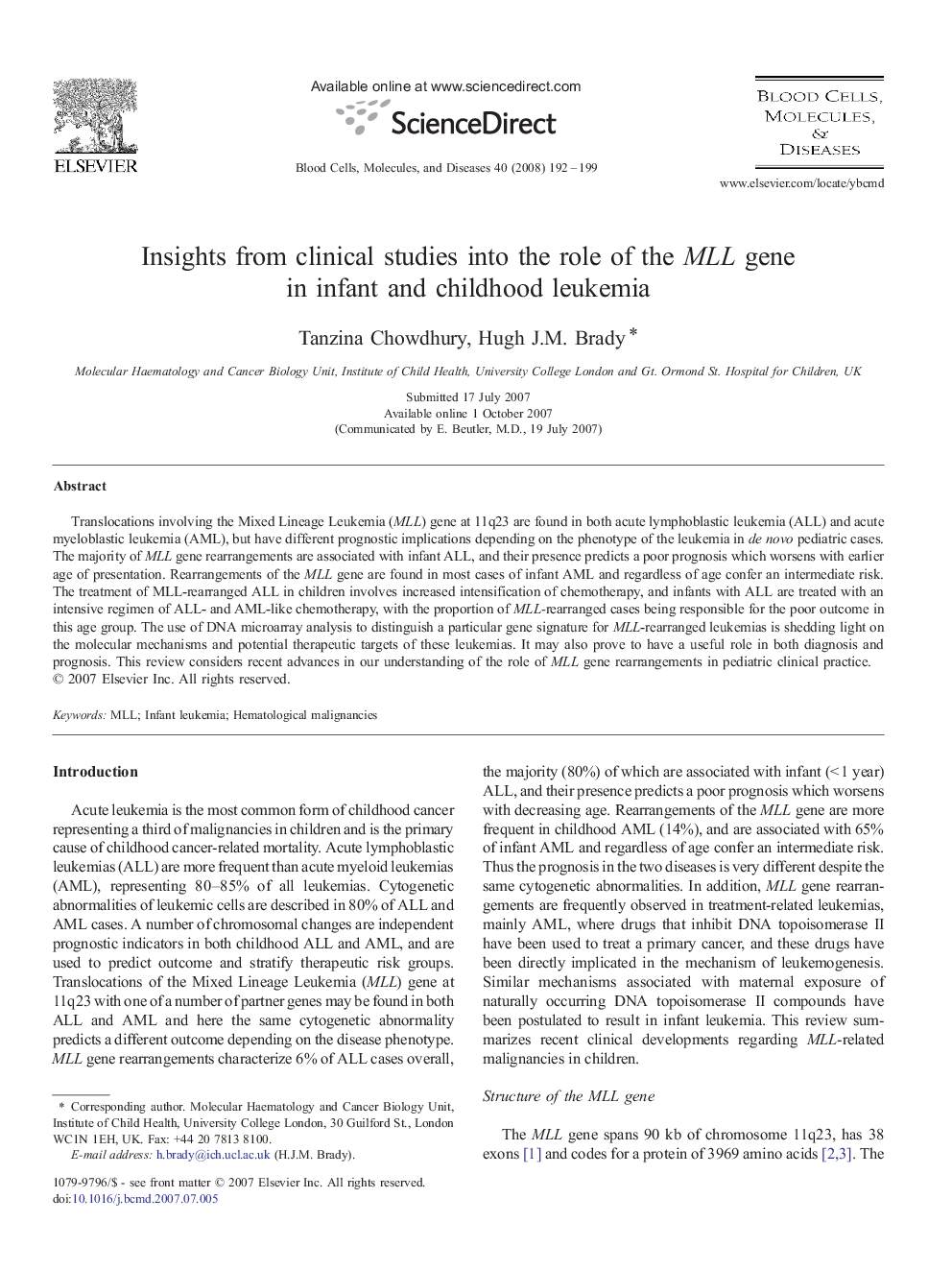| Article ID | Journal | Published Year | Pages | File Type |
|---|---|---|---|---|
| 2827984 | Blood Cells, Molecules, and Diseases | 2008 | 8 Pages |
Translocations involving the Mixed Lineage Leukemia (MLL) gene at 11q23 are found in both acute lymphoblastic leukemia (ALL) and acute myeloblastic leukemia (AML), but have different prognostic implications depending on the phenotype of the leukemia in de novo pediatric cases. The majority of MLL gene rearrangements are associated with infant ALL, and their presence predicts a poor prognosis which worsens with earlier age of presentation. Rearrangements of the MLL gene are found in most cases of infant AML and regardless of age confer an intermediate risk. The treatment of MLL-rearranged ALL in children involves increased intensification of chemotherapy, and infants with ALL are treated with an intensive regimen of ALL- and AML-like chemotherapy, with the proportion of MLL-rearranged cases being responsible for the poor outcome in this age group. The use of DNA microarray analysis to distinguish a particular gene signature for MLL-rearranged leukemias is shedding light on the molecular mechanisms and potential therapeutic targets of these leukemias. It may also prove to have a useful role in both diagnosis and prognosis. This review considers recent advances in our understanding of the role of MLL gene rearrangements in pediatric clinical practice.
